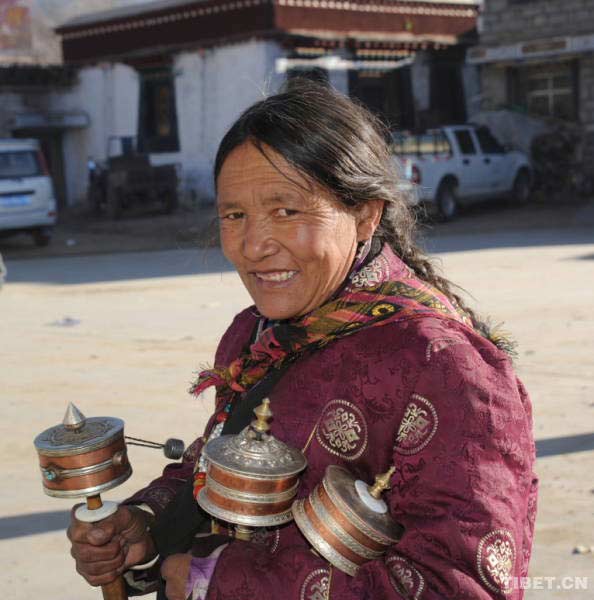
A Tibetan woman is tuning a prayer wheel. Photo: China Tibet Online
Turning or revolving prayer wheels filled with scriptures is believed by Tibetan devotees to bring as much merit as reading the whole sutra.
In Lhasa, the capital city of southwest China's Tibet Autonomous Region, there are always hordes of people circumambulating places of reverence clockwise with a prayer wheel in one hand and a string of prayer beads in another, while murmuring the six-syllable prayer word "om mani padme hum" in the mantra of Avalokitesvara.
The prayer wheels just carry their wishes and expectations for happy life.
In Tibet and Tibetan inhabited areas in China, prayer wheels can be seen around temples or near villages where they are fixed in rows to form a prayer-wheel corridor for people to turn, or on river banks to revolve by current force, and on mountain-passes to turn with the wind, and also above butter-lamps at Tibetans' home chambers. Yet, the most common ones are those manual rotatable prayer wheels people often carry in their hands.
These are five kinds of prayer wheels categorized in Buddhism according to the source of turning force: earth, water, wind, fire and manual labor.
With the development of Tibetan tourism, the manual rotatable prayer wheels become appealing to tourists and are developed to be tourism handiworks, which are prevalent on the stalls in the Barkhor Street of Lhasa.
The handiwork prayer wheels sold on the Barkhor Street come from Nepal, India and inland China. Even though they all bear traditional structures, those from Nepal and India are mainly man-made with turquoise as the primary decorative materials, the price of which ranges from dozens of dollars to hundreds. Those from inland China are mostly mass production by machine and sell cheap. Yet, in recent year some prayer wheels made in inland China carrying innovative artistic elements also appear in the market.
Over the years, the prayer wheels have been turning infinitely under a touch of a yak-butter-smelled finger and amid the rhythmical recitation of the mystical word "om mani padme hum" on the plateau to spread Tibetans' devout belief.
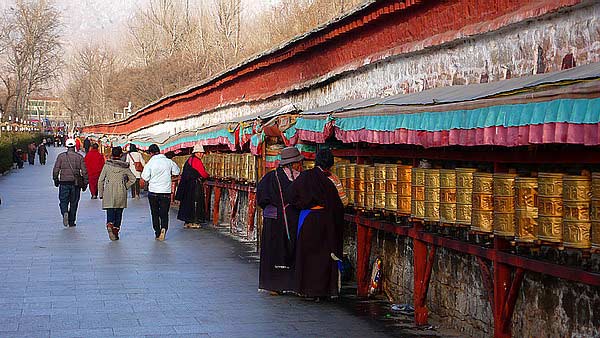
Prayer wheels are fixed in rows to form a prayer-wheel corridor around the Potala Palace. Photo: China Tibet Online
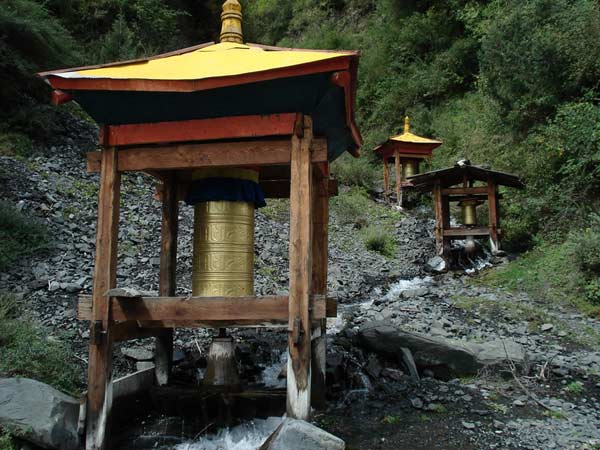
Prayer wheels along a brook. Photo: Baidu
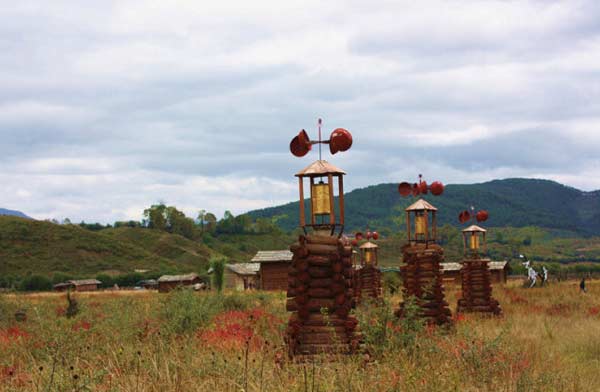
Prayer wheels on mountain-passes. Photo: Baidu
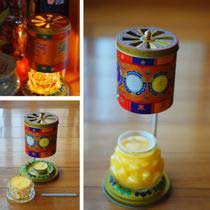
Small prayer wheels above butter-lamps at Tibetans’ home chambers. Photo: Baidu
|
|
||
 |
| Touched | Sympathetic | Bored | Angry | Amused | Sad | Happy | No comment |
Rhythm Media Group is a multi-media company, operating a US-based Chinese daily newspaper, The China Press, and the paper's website - uschinapress.com (which has mobile-app version), as well as a Beijing-based English website Sino-US.com. The group boasts 15 branch offices across the US, and a number of cultural centers focusing on culture-related business in the North America, Chinese mainland, Hong Kong and Taiwan.Launched in September 2012, the Sino-US.com is designed to serve as a bridge between China and the US, and to keep its readership inside or outside China better informed by providing news and insights on China's current affairs, culture, life, business, people and sports.
|
|